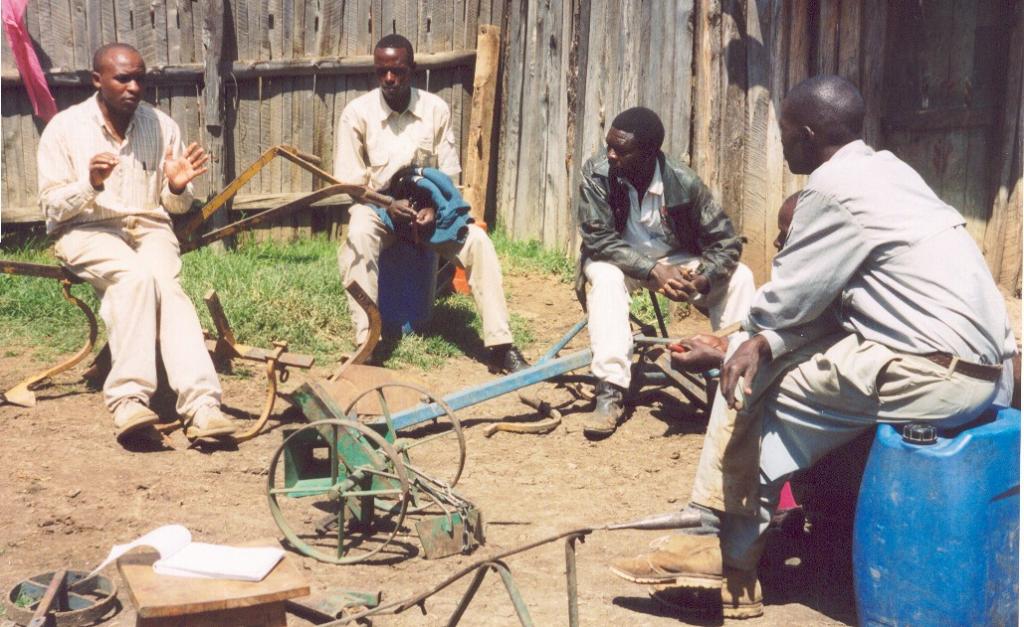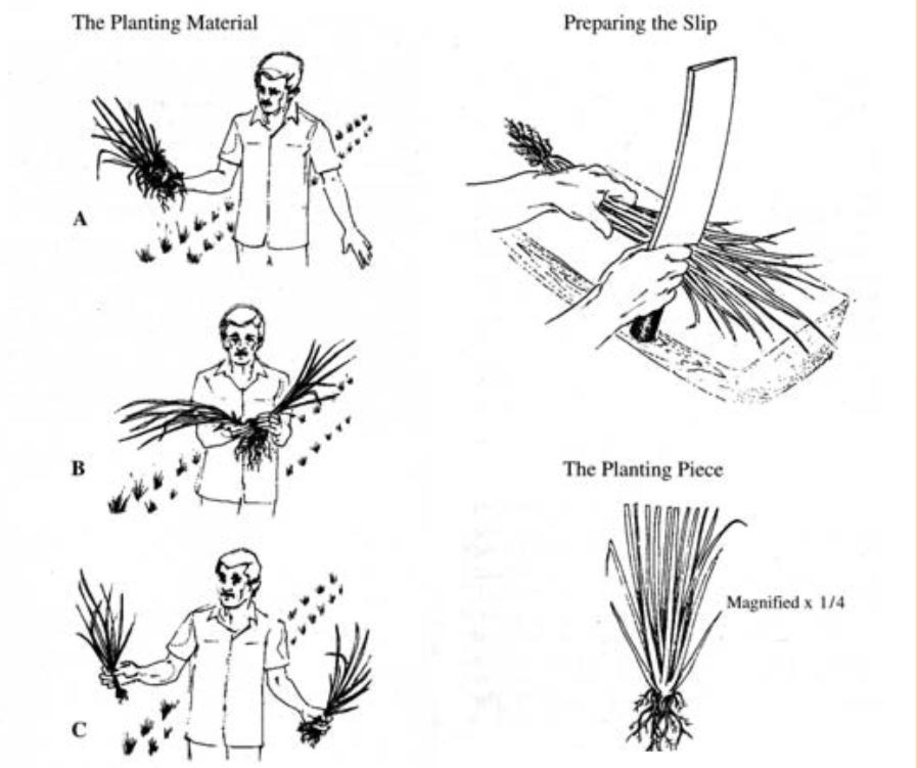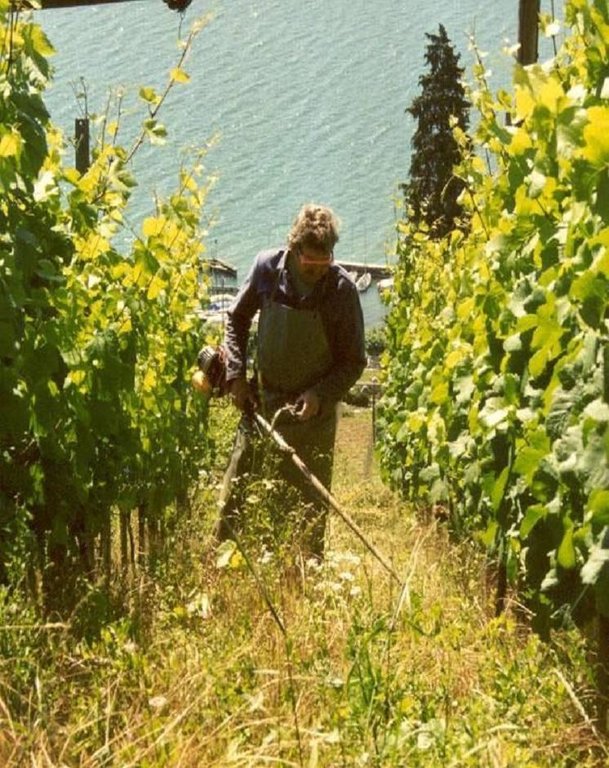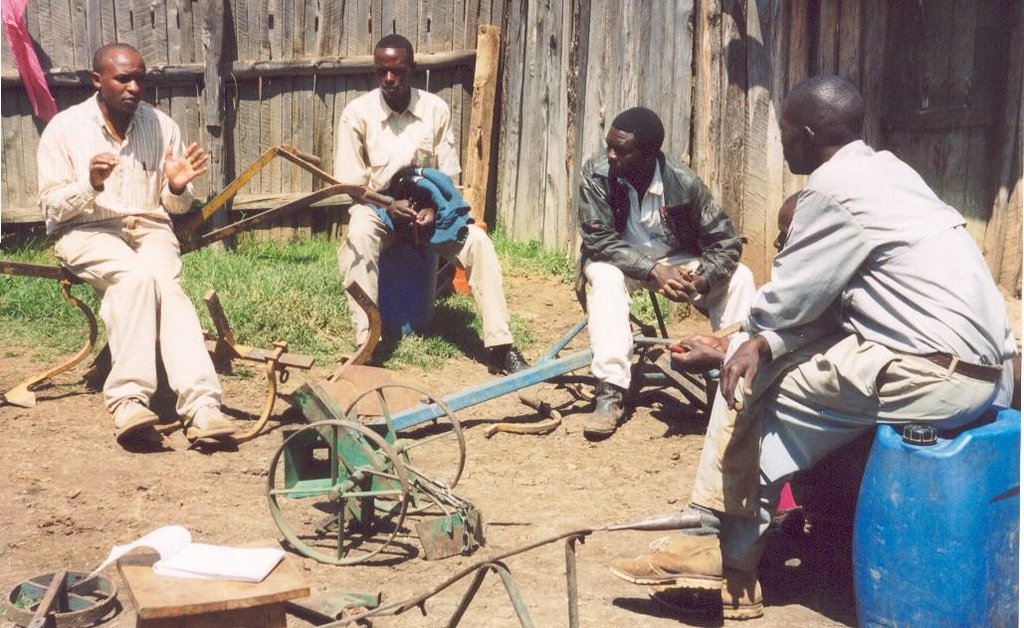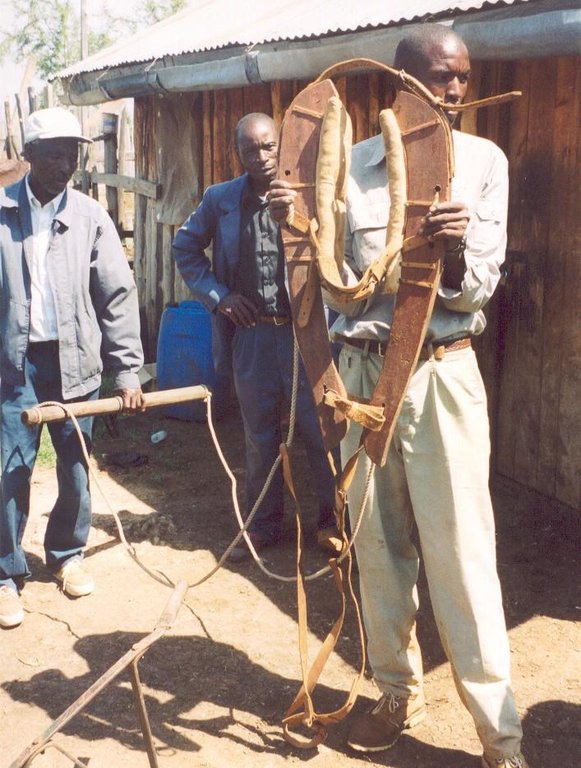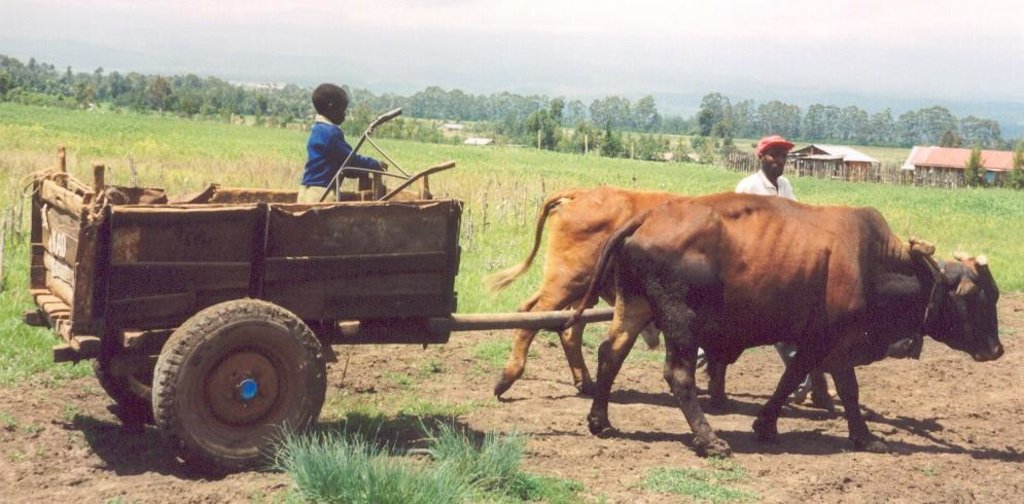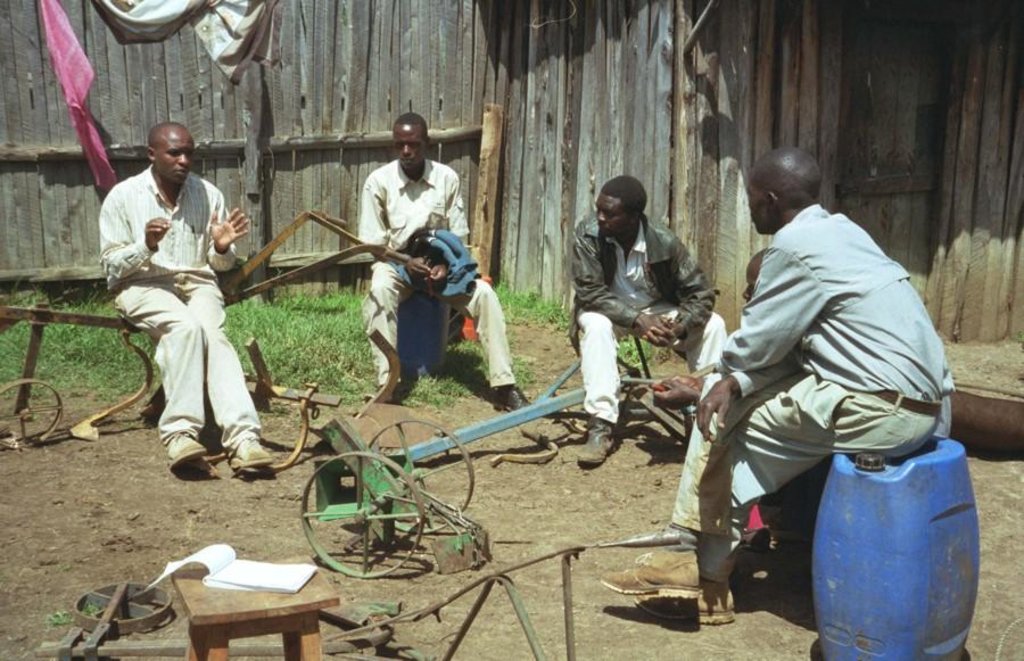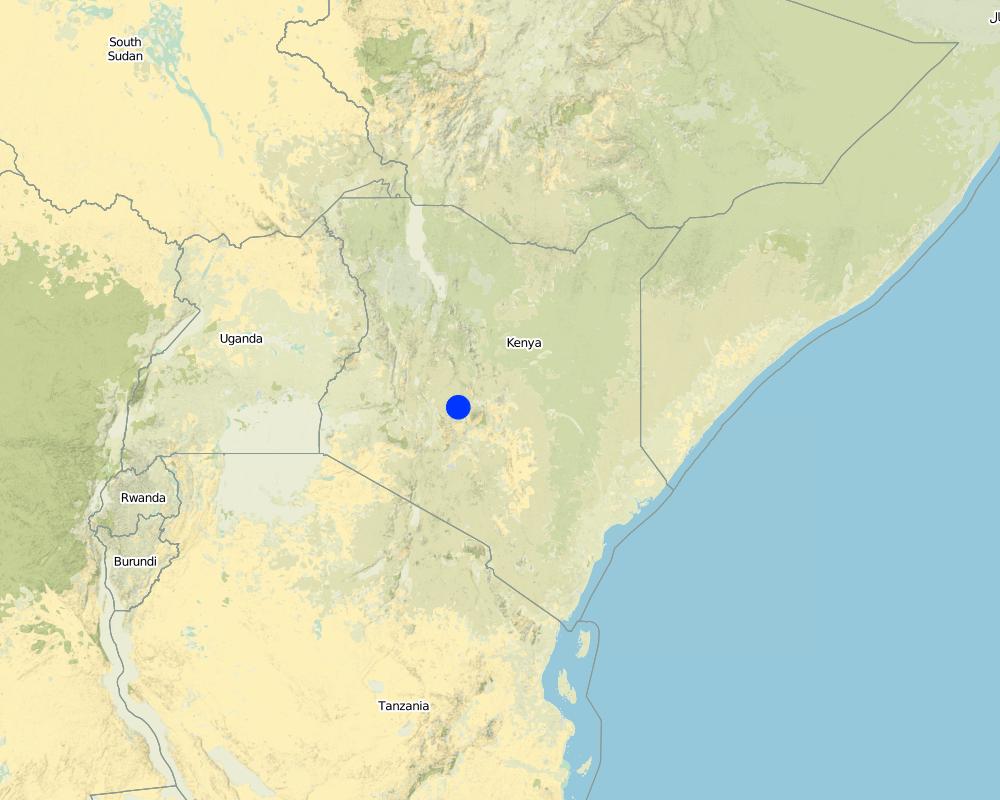Self-help groups [肯尼亚]
- 创建:
- 更新:
- 编制者: Frederick I. Kihara
- 编辑者: –
- 审查者: Fabian Ottiger, Deborah Niggli
approaches_2357 - 肯尼亚
查看章节
全部展开 全部收起1. 一般信息
1.2 参与方法评估和文件编制的资源人员和机构的联系方式
SLM专业人员:
Kiteme Boniface
+254-62 31328
b.kiteme@africaonline.co.
CETRAD - Centre for Training and Integrated Research in ASAL Development
PO Box 144, Nanyuki
肯尼亚
SLM专业人员:
有助于对方法进行记录/评估的项目名称(如相关)
Book project: where the land is greener - Case Studies and Analysis of Soil and Water Conservation Initiatives Worldwide (where the land is greener)有助于对方法进行记录/评估的机构名称(如相关)
Centre for Training and Integrated Research in ASAL Development (CETRAD) - 肯尼亚有助于对方法进行记录/评估的机构名称(如相关)
University of Bern, Institute of Geography (GIUB) - 瑞士有助于对方法进行记录/评估的机构名称(如相关)
Agronomica - 英国1.3 关于使用通过WOCAT记录的数据的条件
编制者和关键资源人员接受有关使用通过WOCAT记录数据的条件。:
是
1.4 SLM技术问卷的参考
2. SLM方法的描述
2.1 该方法的简要说明
Small-scale farmers forming self-help groups to provide mutual support for adopting and promoting conservation agriculture.
2.2 该方法的详细说明
该方法的详细说明:
Aims / objectives: The self-help group approach described here is an initiative which grew from the local land users themselves. Farmers with common interests and goals came together, formed and registered groups and developed constitutions. Conservation agriculture groups started forming in 1997: within two years, five groups had been set up in the study area with over 150 members. The Ministry of Social Services facilitated the registration process. Groups have liased with technology promoters from the Ministry of Agriculture, KENDAT (Kenya Network for Draught Animal Technology), and research and development projects, to gain access to technical knowledge. These organisations have set up research and monitoring projects to assess the impact of conservation agriculture in this area. The groups receive more attention from local development partners than individuals would. The overall purpose behind the formation of the groups is to improve household food security and raise income. More specific objectives include: (1) mutual adoption of the technology, enabling group members to improve their farm operations and yields, and thereby; (2) creation of opportunities for additional income to help and support each other; (3) sharing knowledge, and conservation tillage equipment.
Role of stakeholders: Groups involve themselves in farmer-to-farmer training. They develop training modules which cover all aspects of conservation agriculture as well as practical training of the animals. Meetings are held once a month to plan group activities. The groups also solicit loans from local development partners for equipment, and they access training on technology from national institutions. Further collaboration with national institutes is planned to facilitate availability of droughttolerant crop varieties. The members of the self-help groups make various contributions including time, money, animals and some equipment - for joint group activities. Farmers with equipment contract their services to those without, but this is provided at a 20% discount to members.
Other important information: High adoption levels of conservation agriculture have been achieved through the self-help groups, due to the sharing of resources for technology development and mutual support. The interest in conservation agriculture and demand for equipment is high and growing. Group members are also diversifying their activities into, for example, agroforestry, water harvesting and bee-keeping.
2.3 该方法的照片
2.5 采用该方法的国家/地区/地点
国家:
肯尼亚
区域/州/省:
Rift Valley
Map
×2.6 该方法的开始和终止日期
注明开始年份:
1997
2.7 方法的类型
- 基于项目/方案
2.8 该方法的主要目的/目标
The Approach focused mainly on SLM with other activities (poverty alleviation, collective bargaining for procuring services, joint produce marketing, on-farm diversification, off-farm opportunities)
- increase household food security and raise income within the group. - provide mutual support and thereby develop collective bargaining power - an example is the ability to attract technology training from national organisations. - seek possible ways of acquiring equipment for all members of the group, through securing donor support or sponsorship. - all cropland to be under conservation tillage, with all members being fully trained in the technology and having the necessary equipment
The SLM Approach addressed the following problems: - insufficient individual resources to invest in/or learn about new technology. - underlying problems of (1) food security and (2) insecure water supply for rainfed crop production due to insufficient and poorly distributed rainfall
2.9 推动或妨碍实施本办法所适用的技术的条件
社会/文化/宗教规范和价值观
- 阻碍
Use of draught animals seen as backward and non-progressive and gender-bias (technical operations and animal ownership traditionally male activities)
Treatment through the SLM Approach: The number of practising farmers providing mutual support able to neutralise such thinking and the group approach has created an avenue for women to participate
财务资源和服务的可用性/可得性
- 阻碍
Equipment is costly and generally cannot be afforded by many
Treatment through the SLM Approach: Ability to hire services from farmers in the group who have equipment
法律框架(土地使用权、土地和水使用权)
- 启动
The existing land ownership, land use rights / water rights moderately helped the approach implementation: Small land size can hinder adoption of the technology: the group approach can help to overcome this limitation. Those with small land parcels can access and afford the technology without having to keep animals.
了解SLM,获得技术支持
- 阻碍
Technology wsa new and initially not well understood
Treatment through the SLM Approach: As an organised group, the members were able to attract technical training from experts (eg KENDAT, KCTI)which was paid by local development partners and also learnt from more experienced members of the group
其他
- 阻碍
Organisational. Group formation and group dynamics
Treatment through the SLM Approach: 2-3 enthusiastic, visionary individuals ensures success
3. 相关利益相关者的参与和角色
3.1 该方法涉及的利益相关者及其职责
- 当地土地使用者/当地社区
Farmers, with common interests and goals, formed the group, registered and enacted their constitution. Government Ministry of Social Services facilitated the registration process. Group members liaised with technology promoters to access technical knowledge.
Working land users were work equally divided between men and women (The group has mixed membership but men tend to dominate field operations). Men traditionally own animals and have easier access to investment capital to purchase equipment than women. However, this is changing. In addition, in one group, the treasurer is a woman. The group also trains women how to use the technology. Within the first year, one woman had obtained the whole set of equipment plus a pair of oxen.
- 国家政府(规划者、决策者)
The group mobilises itself but with some support from Ministry of Agriculture extension workers.
3.2 当地土地使用者/当地社区参与该方法的不同阶段
| 当地土地使用者/当地社区的参与 | 指定参与人员并描述活动 | |
|---|---|---|
| 启动/动机 | 互动 | public meetings; Creating awareness of technological development through open forums undertaken by agricultural extension staff. Meetings were held to plan organisational development . Farmers received information about an innovation that could be beneficial to them; they then mobilised themselves |
| 计划 | 互动 | public meetings; The group plans its own agenda in meetings |
| 实施 | 互动 | responsibility for major steps; The group is responsible for procuring equipment and inputs; they train their animals, while training on technology is provided by specialists |
| 监测/评估 | 自我动员 | Mainly: measurements/observations; partly: public meetings; Group members keep yield records which are reported and discussed at meetings (without participation of specialists) |
| Research | 互动 | on-farm; Farmers themselves compare cultivation methods; in addition, some research plots by KENDAT, the extension services (MoA) and students have also been set up in farmers' fields. |
3.4 有关SLM技术选择的决策
具体说明谁有权决定选择要实施的技术:
- 主要是SLM专家,咨询土地使用者之后
解释:
Supported by the National Soil and Water Conservation programme under the Ministry of Agriculture (MoA). SWC specialists created awareness of the technology in the local community, with land users independently deciding to adopt.
Decisions on the method of implementing the SLM Technology were made by by land users* alone (self-initiative / bottom-up). Farmers adopted the technology with modifications so that they could use their animals for draught power. However, there was a degree of follow-up by SWC specialists.
4. 技术支持、能力建设和知识管理
4.1 能力建设/培训
是否为土地使用者/其他利益相关者提供培训?:
是
明确受训人员:
- 土地使用者
- group members, SWC specialists (2), extensionists/trainers (3)
培训形式:
- 农民对农民
- 示范区域
- 课程
涵盖的主题:
The main element is farmer-to-farmer training within the group on use of appropriate equipment, equipment maintenance, animal health and care. Members attend training courses organised by extension staff and NGOs including KENDAT and Operation Comfort (from Central Kenya). Apart from courses, there are demonstration areas on research sites and group plots, as well as farm visits amongst and betwee
4.2 咨询服务
土地使用者有权使用咨询服务吗?:
是
指明是否提供了咨询服务:
- 在土地使用者的土地上
说明/注释:
Name of method used for advisory service: Innovative farmers support; Key elements: Identify innovative farmers in an area, Supporting them to come together, Providing new technology training; 1) Advisory service was carried out through: Other: governmental, non-governmental and group members 2) Advisory service was carried out through: Other: governmental, non-governmental and group members; Extension staff: mainly government employees 3) Target groups for extension: land users; Activities: Training on use of appropriate equipment, equipment maintenance, animal health and care etc
Advisory service is inadequate to ensure the continuation of land conservation activities; The performance of the technology is very impressive and rapidly adopted by group members. However this is dependent on the group ie 2-3 enthusiastic and innovative members are required for a successful group. Further expansion is limited by weak extension support.
Extension is carried out through governmental and non-governmental specialists, equipment sales person and well-informed group members. This is facilitated by the way groups formed and tapped into the extension advice, and also shared information amongst themselves.Extension is carried out through governmental and non-governmental specialists, equipment sales person and well-informed group members. This is facilitated by the way groups formed and tapped into the extension advice, and also shared information amongst themselves.
4.3 机构强化(组织发展)
是否通过这种方法建立或加强了机构?:
- 是,适度
具体说明机构的强化或建立程度:
- 本地
具体说明支持类型:
- 能力建设/培训
4.4 监测和评估
监测和评估是该方法的一部分吗?:
是
注释:
bio-physical aspects were ad hoc monitored. Indicators: work undertaken
technical aspects were ad hoc monitored. Indicators: rate of adoption, attitudinal changes
socio-cultural aspects were regular monitored through observations; indicators: yield/area with the data from research station being occasionally analysed and results shared out
economic / production aspects were ad hoc monitored through measurements; indicators: acreage
area treated aspects were ad hoc monitored through measurements; indicators: as membership feedback af meetings
no. of land users involved aspects were ad hoc monitored through observations; indicators: None
management of Approach aspects were regular monitored through observations; indicators: None
There were few changes in the Approach as a result of monitoring and evaluation: The success of the technology - conservation agriculture - has strengthened group collective bargaining power to attract further extension input support, regular visitation and advice on best agronomic practices. There has also been a move to encourage women's uptake of the technology.
4.5 研究
研究是该方法的一部分吗?
是
明确话题:
- 技术
提供进一步的细节,并指出是谁做的研究:
On-farm research is carried out by KENDAT, who conduct field trials to investigate the best technological practices. The data is collected in collaboration with participating farmers. The field research activities have included long-term experiments, demonstration sites and field days.
Research was carried out on-farm
5. 融资和外部物质支持
5.1 该方法中SLM组成部分的年度预算
如果不知道准确的年度预算,请给出一个范围:
- < 2,000
注释(例如主要的资助来源/主要捐助者):
Approach costs were met by the following donors: local community / land user(s) (Self-help group members): 100.0%
5.2 为土地使用者提供财政/物质支援
土地使用者是否获得实施该技术的财政/物质支持?:
是
如果是,请具体说明支持的类型、条件和提供者:
Two year loans are available from international development partners (SNV).
5.3 对特定投入的补贴(包括劳动力)
- 设备
| 具体说明哪些投入得到了补贴 | 程度如何 | 对补贴做出具体说明 |
|---|---|---|
| 机械 | 部分融资 | 2 year loan possible |
- 其它
| 其它(具体说明) | 程度如何 | 对补贴做出具体说明 |
|---|---|---|
| Technical training and back up | 充分融资 |
如果土地使用者的劳动力是一项重要的投入,那么是不是:
- 自愿
5.4 信用
是否根据SLM活动的方法给予信用值?:
是
对条件(利率、回报等)进行具体说明:
Two year loans are available from international development partners (SNV). Generally 50% is repaid in the 1st year, 50% in the 2nd year. These loans are used to purchase equipment, with group members acting as guarantors for each other.
请具体指明授信方:
The community contributed a considerable percentage (through labour and time). KENDAT (NGO,Kenya) mainly provided training and extension, whereas SNV (NGO, Netherlands) gave credits. Details of the breakdown are not available.
6. 影响分析和结论性陈述
6.1 方法的影响
该方法是否帮助土地使用者实施和维护SLM技术?:
- 否
- 是,很少
- 是,中等
- 是,支持力度很大
These improvements include in situ moisture conservation (reduced evaporation and runoff), water harvesting, increased soil fertility and reduced soil loss.
Did other land users / projects adopt the Approach?
- 否
- 是,很少
- 是,中等
- 是,支持力度很大
Many self-help groups have arisen and are addressing their particular problems related to conservation agriculture.
6.2 土地使用者实施SLM的主要动机
- 降低灾害风险
6.3 方法活动的可持续性
土地使用者能否维持通过该方法实施的措施(无外部支持的情况下)?:
- 是
若是,请说明如何维持:
Land users can continue group formation and the associated activities without external support because they can seek technical support for the specific activities.
6.4 该方法的长处/优点
| 土地使用者眼中的长处/优势/机会 |
|---|
| Collective bargaining power is achieved through good accounting and positive group financial status. This tends to attract donor support for further collective activities. |
| Sharing of technological knowledge, as well as equipment, within the groups and exchange between groups. |
| 编制者或其他关键资源人员认为的长处/优势/机会 |
|---|
| Easier for extension services to target a group of like-minded farmers than individuals (How to sustain/ enhance this strength: Encourage further self-help group formation) |
| Self-help groups are self-sustaining (How to sustain/ enhance this strength: Ensure continual success by providing refresher courses on technology by extensionists, introduce innovations to keep group interest alive.) |
6.5 该方法的弱点/缺点以及克服它们的方法
| 土地使用者认为的弱点/缺点/风险 | 如何克服它们? |
|---|---|
| Greater time and energy input from the innovative farmers, because they pass on their knowledge without direct reward | Farmers gain confidence and status in the group or area as leaders. |
| 编制者或其他关键资源人员认为的弱点/缺点/风险 | 如何克服它们? |
|---|---|
| Self-help groups are not optimal where some individuals are relatively poor and cannot afford contributions | modify arrangements to permit higher contributions by more financially able members who then get a greater share of the profits. |
7. 参考和链接
7.2 参考可用出版物
标题、作者、年份、ISBN:
Liniger HP and Thomas DB (1998) GRASS - Ground Cover for Restoration of Arid and Semi-arid Soils. Advances in
Ngigi SN (2003) Rainwater Harvesting for improved land productivity in the Greater Horn of Africa. Kenya
Mutunga CN (1995) The influence of vegetation cover on runoff and soil loss - a study in Mukogodo, Laikipia district Kenya. MSc
Kihara FI (1999) An investigation into the soil loss problem in the Upper Ewaso Ng'iro basin, Kenya. MSc. Thesis. University of
链接和模块
全部展开 全部收起链接
无链接
模块
无模块


